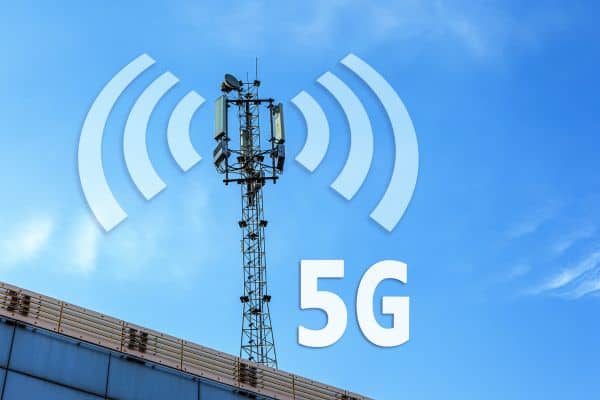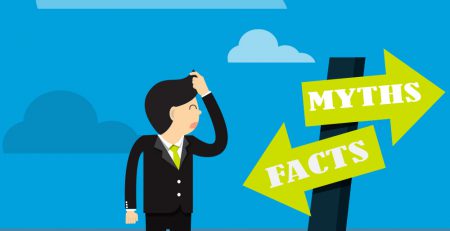Get to grips with 5G
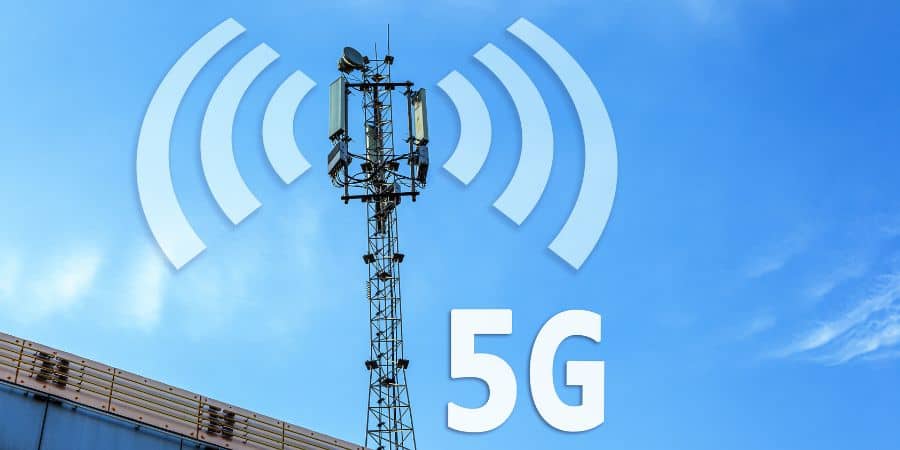
(Photo: Tower which is capable of transmitting a 5G signal)
As you may well be aware, 5G is the latest generation technology for broadband mobile networks, offering higher download speeds, greater bandwidth capability and many other benefits that make it the perfect upgrade from its predecessor, 4G.
The rollout of 5G continues across the UK and it has been predicted that 5G will have over 1.8 billion subscribers worldwide by 2025. Read on to learn more about the benefits 5G offers you and your business.
Capacity
The term capacity, sometimes referred to as “device density,” pertains to the network’s ability to accommodate a large volume of traffic concurrently. Consider a scenario where your team utilises their devices for video and voice calls, data transfers and collaborative work throughout the day.
A network with higher capacity can handle more devices simultaneously, thereby improving the service provided to multiple devices.

(Photo: 5G networks are built to accommodate more capacity)
The enhanced capacity capabilities of 5G enables you to utilise more devices concurrently than ever before. This is especially beneficial for remote workers, who can now work without any disruptions, even if their family or friends are streaming simultaneously.
Latency
Have you ever found yourself desperately attempting to send a time-sensitive work email only to have it repeatedly fail due to a poor Wi-Fi connection? If so, then you are all too familiar with the frustrating world of latency. Essentially, latency refers to the time delay that transpires between an action and a response, similar to the brief moment it takes for a light to turn on after you flip a switch.
A high latency rate can cause a service to become sluggish or even result in a complete loss of connection. For instance, you may have experienced this while on a call where you could hear your colleague’s voice, but their words did not match up with their mouth movements.

(Photo: High latency is a key indicator of poor network performance)
Fortunately, with 5G technology, latency levels have been significantly reduced. The delay between sending and receiving data on a device can now be decreased from 200 milliseconds to less than one millisecond. This implies that you will have more time to engage with clients and colleagues without the awkward delays or frozen screen poses that can be so aggravating.#
Frequency
The speed at which data is transmitted and received between devices that are connected to your wireless network determines the frequency. To deliver 5G’s faster data speeds and capacity, it operates on a high-band spectrum. To put it in numerical terms, 5G operates at frequencies of approximately 28GHz and 39GHz, whereas 4G networks use around 200MHz to 2500Mhz frequencies to transfer information.
Location and use case also help determine the frequency required. For instance, let’s consider high-frequency spectrum and low-frequency spectrum. High-frequency has shorter wavelengths, which translates to faster speeds but shorter distances. In contrast, low-frequency has longer wavelengths, so it can travel further but at slower speeds. Lower frequencies also penetrate buildings better, which means that indoor coverage will be better on these frequencies than on a higher one.
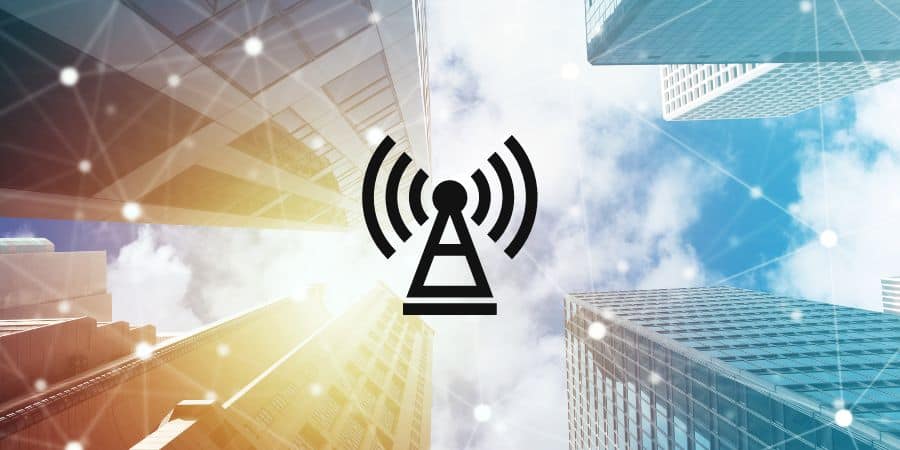
(Photo: 5G performs best at a higher frequency, which accounts for higher bandwidth)
Areas with a high density of devices that require more speed and bandwidth will be better served by a high-frequency spectrum, while rural areas will be better off on a lower frequency as a wider area can be covered through these. To function at its best, 5G prefers a higher frequency (and higher bandwidth).
Spectrum
Radio frequencies allocated for communication over airwaves are known as spectrum and are crucial for businesses with mobile staff. Different frequency bands can be created to serve different purposes, including coverage and capacity bands. To deliver widespread coverage, faster speeds, connect more people and support a wider range of use cases, 5G requires more spectrum than 4G.

(Photo: 5G requires more spectrum than 4G to allow for higher speeds and wider coverage)
As a result, enhanced video and audio quality will become the norm, which will improve virtual conferencing for remote workers. 5G will also allow employees to work from anywhere, and the connection will be just as strong and speedy due to the additional spectrums it runs through.
Bandwidth
The maximum amount of data transmitted over an internet connection in a given period of time defines your bandwidth. When employees converse with customers, they require higher amounts of data to present work, communicate plans, secure sales and maintain professionalism. The amount of bandwidth your business needs can depend on factors such as the company’s size, the number of employees and the types of software used.

(Photo: 5G allows for multiple devices to be connected to the same network without compromising speeds)
A 5G network can handle more data, allowing multiple devices to perform at their highest capacity and enabling colleagues to collaborate seamlessly. With 5G’s higher bandwidth, network overloading and crashes can be prevented, and running multiple applications will not cause processes to slow down as they may on a 4G network. In our increasingly connected society, 5G bandwidth delivers the level of business operation needed.
The Internet of Things
The Internet of Things (IoT) is a network of objects, including mobile phones, computers and smart lightbulbs, which are connected via the internet. These devices share data with each other to improve efficiency, productivity and the service they offer.
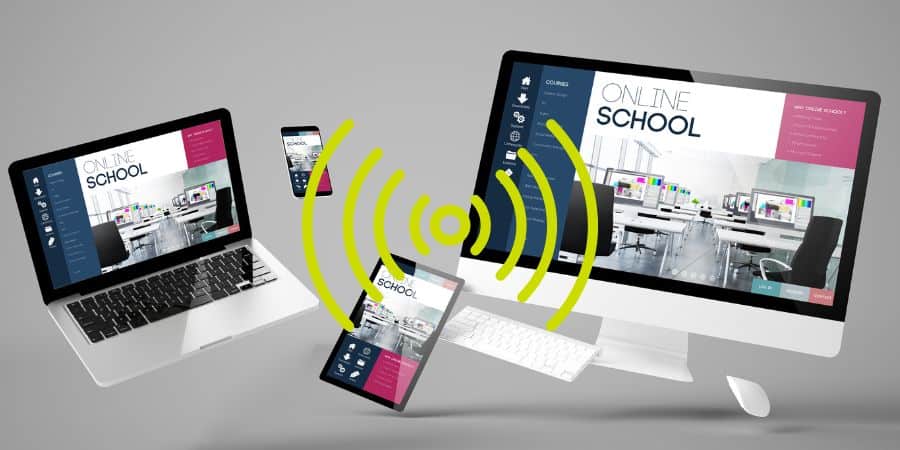
(Photo: A visual example of an Internet of Things)
IoT has already revolutionised how we shop, track inventory and how cars can detect technical issues and relay them to manufacturers. With the introduction of 5G, IoT technology will transform further, potentially powering entire smart cities and enabling devices to communicate and share data faster than ever before.
Network Parity
Network parity refers to when a business’ solutions provider has the same network as their mobile network provider. This ensures that whenever the provider implements updates or enhancements, the business’ services automatically update as well.

(Photo: Adopting the same network provider for mobile and your business can improve your network service overall)
Having network parity ensures that a business’ systems always stay up-to-date and that their teams get the most out of the best service available, including better speed, connectivity, and coverage for voice and data services.
Network Slicing
Network slicing, a complex concept in the realm of 5G, can be easily explained using a simple food analogy. Think of your network as a large, solid block of pasta. Network slicing involves dividing this block into multiple layers, similar to sheets of lasagne, to ensure optimal performance of products and services that run on your network. Each layer has its own function and use case, with the ability to redirect power to layers that are experiencing high traffic, thereby improving overall service performance.
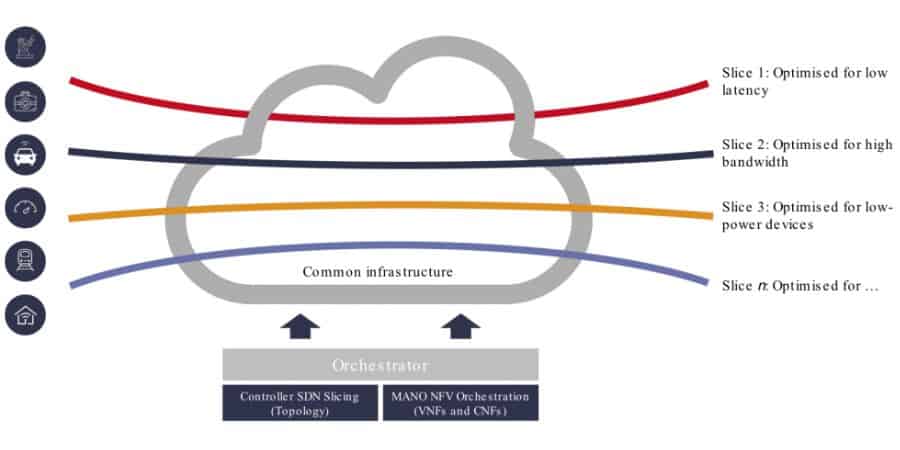
(Source: A diagram which shows the concept of network slicing on a 5G network)
Additionally, each layer can have its own unique architecture, management and security settings to support its purpose, resulting in more efficient management of network resources. When coupled with the benefits of 5G, this type of network capability is crucial in meeting the emerging enterprise needs.
Conclusion
In conclusion, despite the level of technicality, 5G performance is unmatched and it will empower your business technology and people like never before.
Do not hesitate to contact us if you have any doubts about the benefits 5G can deliver to your business, need further information or an understanding how 4Sight can help support your 5G requirements.

